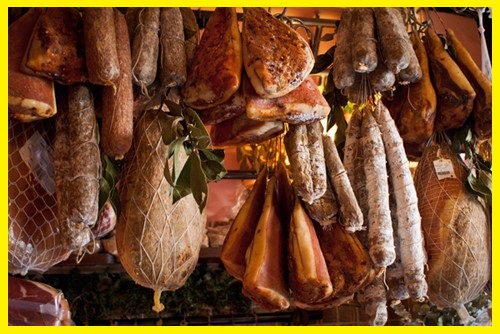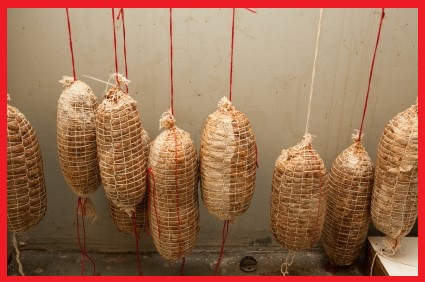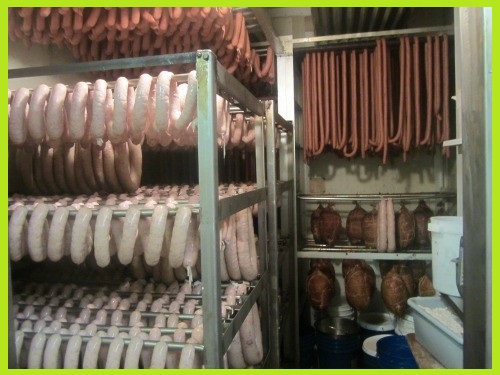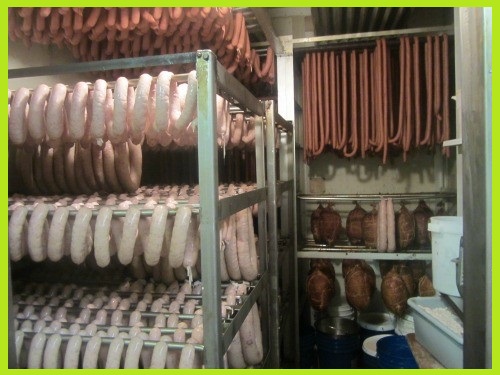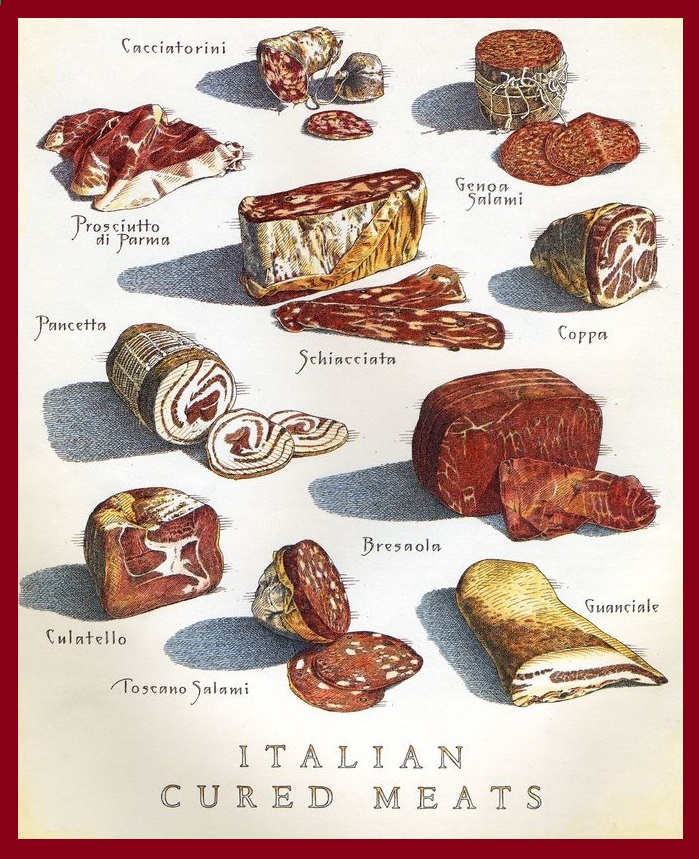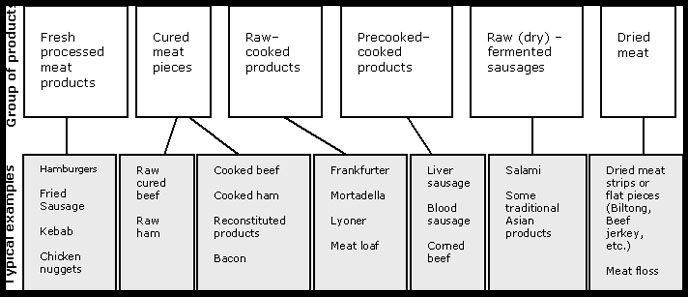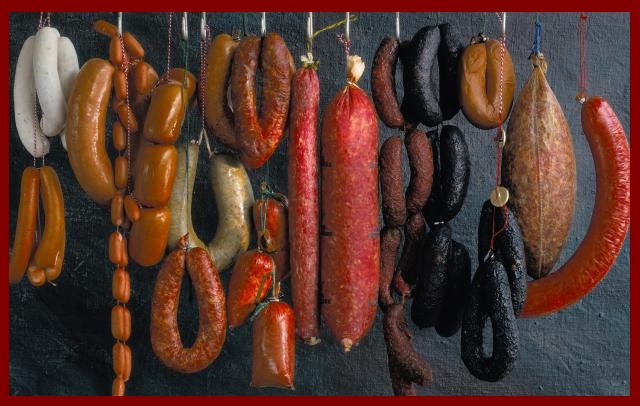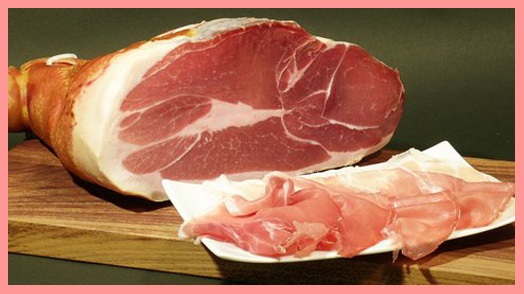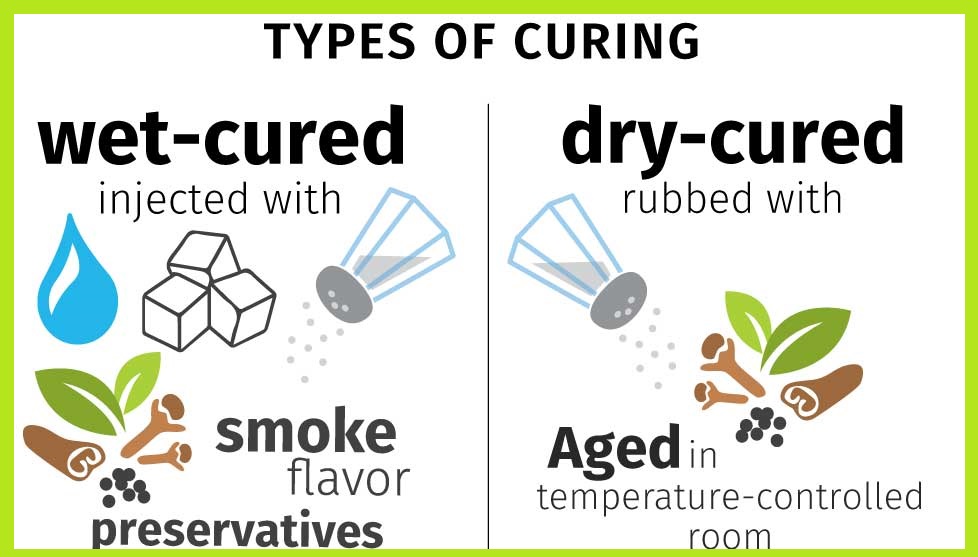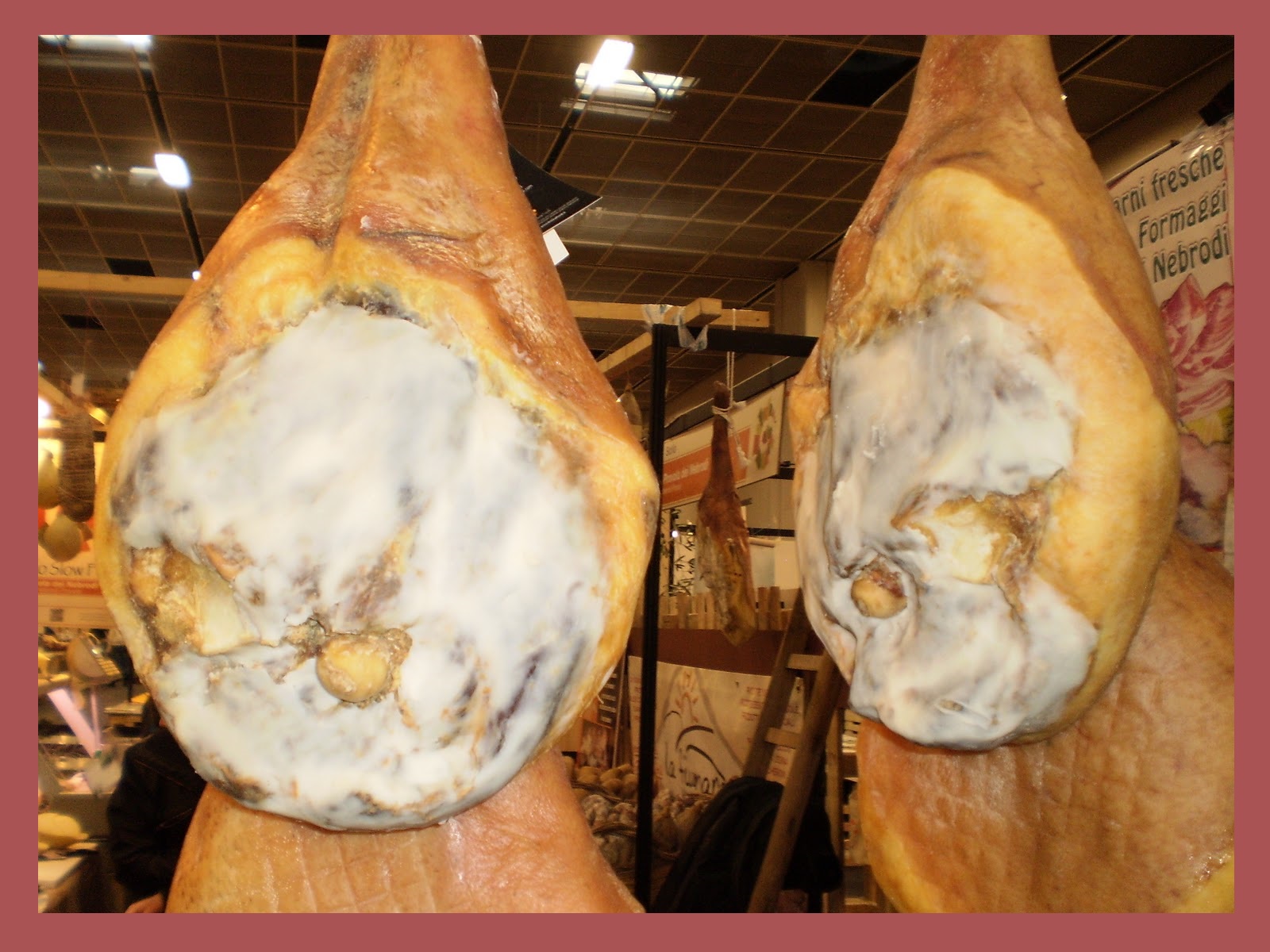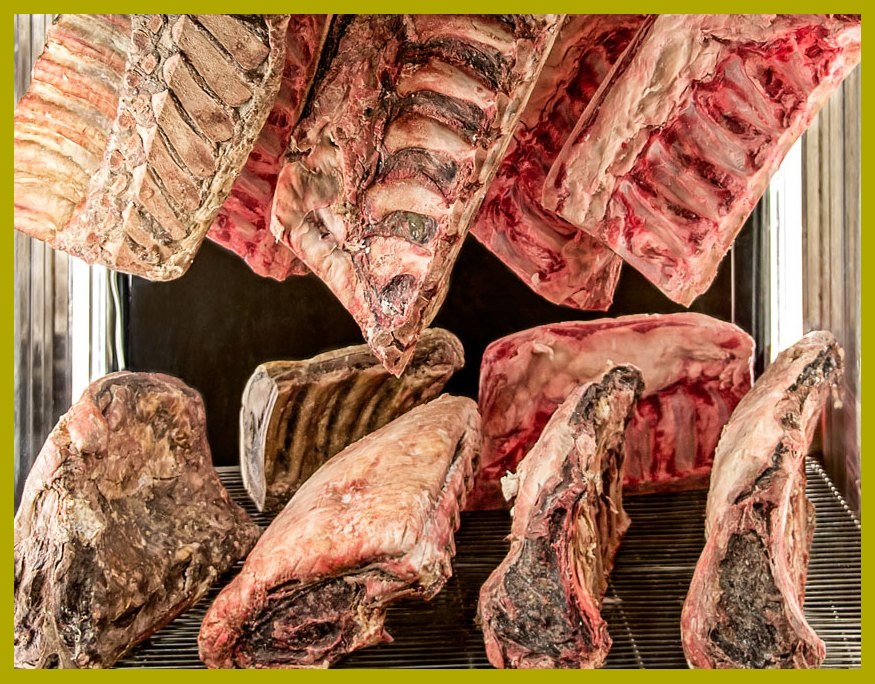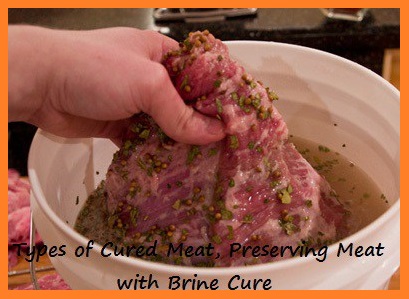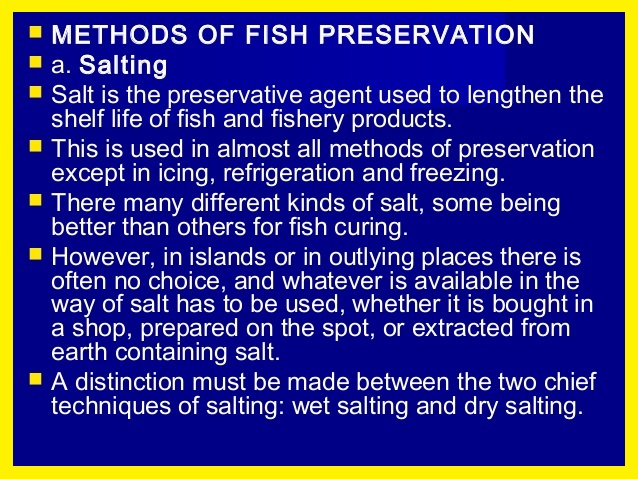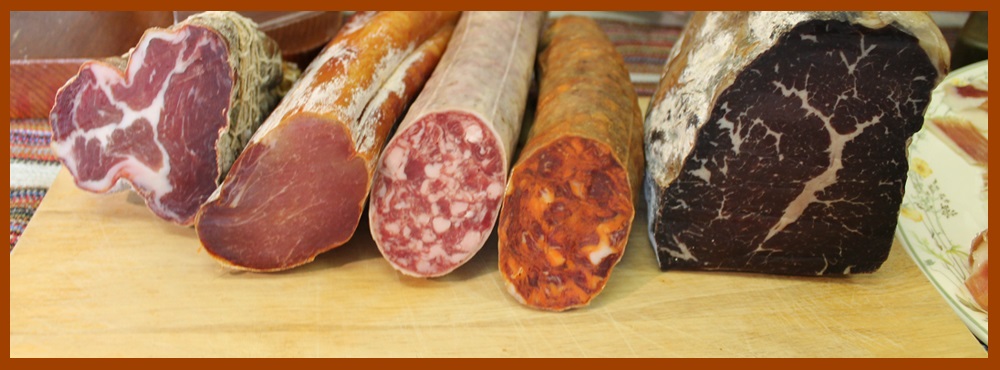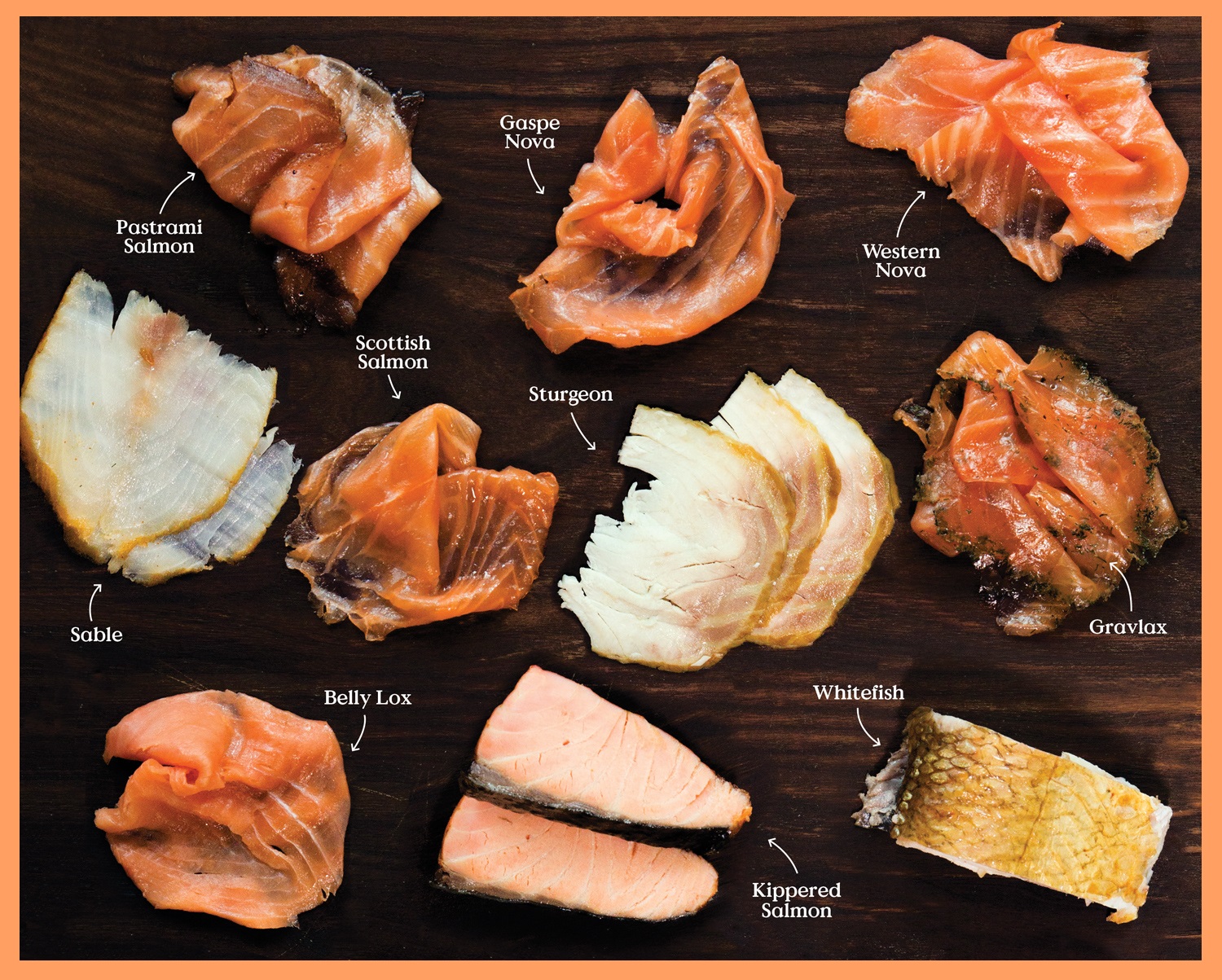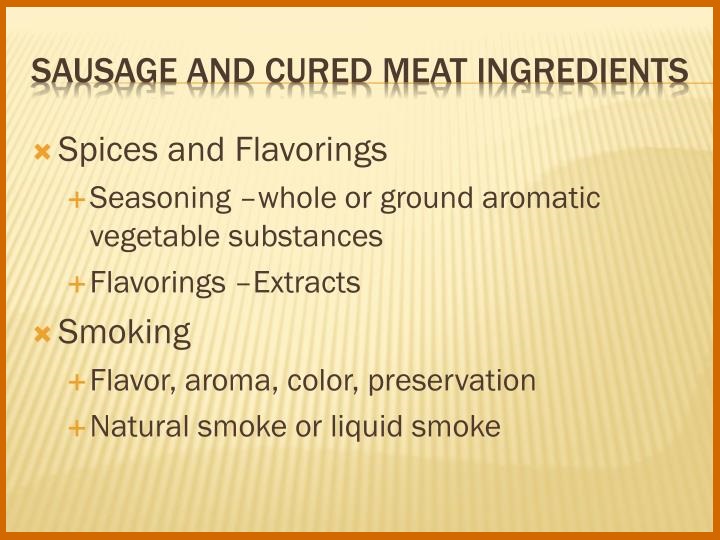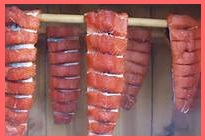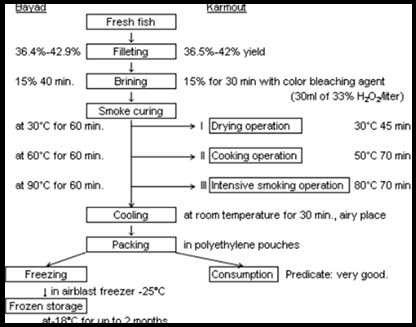CURING
WHAT IS CURING?
Curing is a type of food preservation and flavoring process. It can be used on meats, fish and vegetables. Curing uses different combinations of salts, herbs and sugars. In curing the aim is to draw out the moisture out of the food. Different types of curing include: smoking, spicing, cooking and dehydration. The earliest form of curing is dehydration. .
TYPES OF CURING
DRY CURING
Great for hams, bacon, and smaller cuts of meat. You apply a dry-cure mix directly on the meat. Morton says to place it in a storage bag and place in your kitchen refrigerator, but I have been learning a little about more traditional methods, that will have meat hanging in your kitchen.
WET CURING (BRINE CURING)
Involves mixing curing salt and water to make a pickle solution. Salt water is very corrosive, so you must use a large bowl that isn’t metal. The Brine solution is injected into the meat using a meat pump or the meat is soaked over a period of time. When soaking, it needs to be fully submerged, using a plate, bowl, etc as a weight to keep the meat fully in the brine. Takes place in the refrigerator. Cook meat when finished.
COMBINATION CURING
Combination use a dry rub of salts/herbs and also use injections. These are both used to shorten curing time and reduce spoilage. Done in refrigerator.
SAUSAGE CURING
Mix curing salts and spices with ground meat. Cure in refrigerator. Sausage is cooked before eating. In every cure method, they mentioned refrigerator, and I am here to tell you that many of these were traditionally done in a cool dry place, but not in a refrigerator. Curing temperatures change depending on the process, but is generally between 36-40 degrees F. Warmer allows spoilage, cooler will inhibit the curing process.After curing, you can remove salt from meat by boiling it. It is best to change your curing amounts to prevent this. Products by Morton Salt which are good to use: Morton Tender Quick Mix, Morton Sugar Cure Plain and Morton Sugar Cure Smoke Flavored.
BENEFITS OF CURING MEATS
- Kills certain bacteria and slows down the growth of others.
- Prevents fats from developing a rancid taste.
- Prevents mold from forming on fermented sausages.
- Extends shelf life of the product.
- Improves the taste and flavor.
- Changes the color; smoked meats shine and simply look better.
TYPES OF CURED MEATS
Prosciutto (Pork Thigh)
Gets cured, pressed, and air-dried for two years.
Serrano Ham (Jamon Serrano)
Hung in high elevation sheds.
Canadian bacon (Back Bacon)
From the eye of the loin in the middle of the pigs back.
Country Cured Ham
Dry Cured whereas typical ham is wet-cured. Then smoked over hardwood and aged from 3 months to 2 years.
American bacon
Isn’t truly cured, it comes from pig belly and the traditional way to cure it is by curing the entire belly and hanging in a cool dry place.
Capicola
Seasoned with wine, garlic, herbs, and other spices, then cured and hung for several months.
Bresaola
From Italy and doesn’t get cooked after curing. Sliced paper-thin and drizzled with olive oil when eating.
Andouille
Pork sausage smoked over pecan wood and sugarcane. Doesn’t need cooked, but it is delicious that way.
Billtong
Thick cut and covered with a curing and pickling cure. Much more tinder than jerky. Hung at room temperature and once cured, will keep for a long time.
ADDITIONAL INFORMATION

